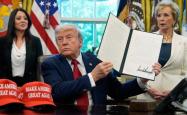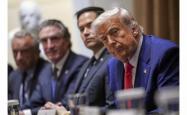Tourism Recovery Requires New Insights and Ideas
The COVID-19 pandemic has grounded much of the tourism industry with huge economic and social consequences. The United Nations World Tourism Organization estimates international tourism could drop as much as 80% this year, putting up to 120 million direct tourism jobs at risk, disproportionately affecting small- and medium-sized enterprises (SMEs), women and young people. Rebounding from such a precipitous decline won’t be easy, but it’s time we all checked in. The industry needs better and more economically sustainable strategies and new collaborations — particularly between the public and private sectors — to ensure the industry not only claws back what it lost but can also thrive and grow. A full recovery also depends on local, regional and national efforts to protect jobs, income and businesses, and rebuild consumer confidence going forward.
Register here to attend the upcoming webinar, Time to Check-In: Protecting & Rebuilding the Tourism Economy, on Thursday, Nov. 19, organized by the Global Government Forum and Knowledge partner, Mastercard.
Changed behaviors require new insights
Attracting returning and new tourists aren’t as important as figuring out how COVID-19 has changed travel behaviors — and what to do about it. Old assumptions won’t work in this new landscape. Rather, businesses and governments that rely on tourism will have to join forces to design more effective tourism strategies. They’ll have to figure out who is willing to travel and able to pay, as well as what incentives might entice domestic and international tourists still cautious of traveling. They’ll also need a deeper understanding of those potential visitors, from their safety concerns and how they make spending, accommodation and travel decisions, to how open they are to adapted attractions and experiences.
For example, one leading national tourism agency is tailoring its COVID-19 safety information campaigns based on tracking spending patterns. This is providing insights into what messages are resonating and encouraging tourist activity once again — hastening recovery of the sector. But, garnering relevant insights from vast amounts of data requires expertise and advanced data analytics.
What’s driving recovery
One of the first insights needed is determining what sectors are starting to show the promise of recovery, and how that’s impacting travel decisions so resources can be deployed to support it. For example, based on an analysis of anonymized and aggregated data from across Mastercard’s network, a gradual improvement in consumer, or tourist, airfare spending has been recorded over the last few months. Europe boasts five of the top 10 destinations for international travelers — with China, Russia and France in the three top spots, according to daily transactions. Consumer air spending also is reviving faster than commercial spending. On the ground, global consumer spending on rental cars is coming back fast, and again, outpacing commercial rentals.
With the fluctuating health needs of nations, this picture is by no means static. The ebb and flow of travel restrictions make the sectors’ journeys to recovery far from linear. This fluid situation requires governments and tourist agencies to have access to timely and near real-time insights to respond to this evolving situation.
Impactful financial stimulus and digitization is more necessary than ever
Government also has a role to play in ensuring the sector, which employs one in 10 people globally, weathers this storm and reaches a sustainable recovery as fast as possible. For example, targeted stimulus is being issued in New Zealand and Japan, and the European Commission is offering government-backed equity funds. New Zealand handed out US$10,000 grants to help SMEs cover wages and Japan waived SME debt if income dropped more than 20%, while the Europeans put private capital to work to sustain tourism-related SMEs. The Argentinian government is funding a 50% rebate for every dollar spent on domestic tourism. These funds are issued on prepaid cards or digital wallets to restrict spending to additional tourist activities — providing a financial shot in the arm.
Boosting consumer confidence that the industry is taking health and safety seriously is another area where governments can help by providing standardization and increasing consumer understanding. Efforts by European public agencies to provide prompt, transparent and consistent communications have been shown to markedly improve travel demand, according to a McKinsey & Company report. There’s also no question that infrastructure needs to be digitized to offer everything from contactless services to frictionless payments, accurate forecasting and coordination among various industry players and regulatory bodies.
With the resumption of travel in some parts of the world and interim mitigation strategies urgently needed, insight and action are needed immediately. Protecting jobs, income and businesses, as well as rebuilding consumer confidence, require that governments and the travel industry have a handle on what’s happening where to make impactful interventions. To take these steps, they must work together to implement solutions and add insightful data analytics. That will allow destinations to gain market share, enhance visitors’ experiences and increase tourism’s contribution to the economy, all while supporting the recovery and growth of local small businesses.
For even more insights on this topic, sign up to attend Time to check in: protecting and rebuilding the tourism economy webinar on Nov. 19. Register for this free webinar by clicking here.
本文 zblog模板 原创,转载保留链接!网址:http://www.hbz.me/?id=10
1.本站遵循行业规范,任何转载的稿件都会明确标注作者和来源;2.本站的原创文章,请转载时务必注明文章作者和来源,不尊重原创的行为我们将追究责任;3.作者投稿可能会经我们编辑修改或补充。








